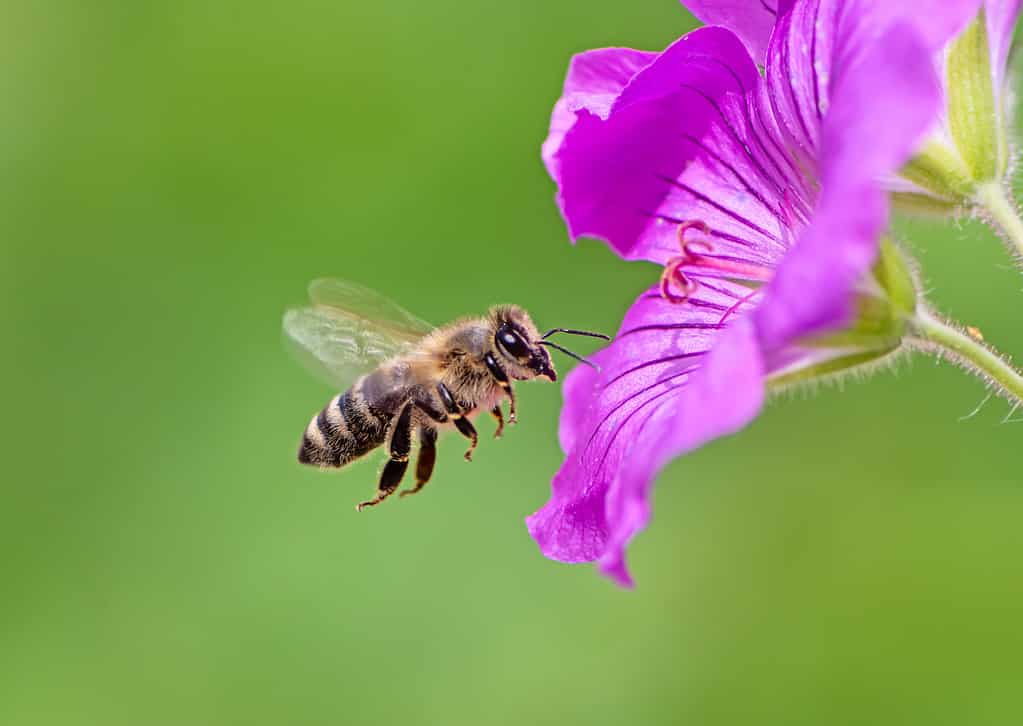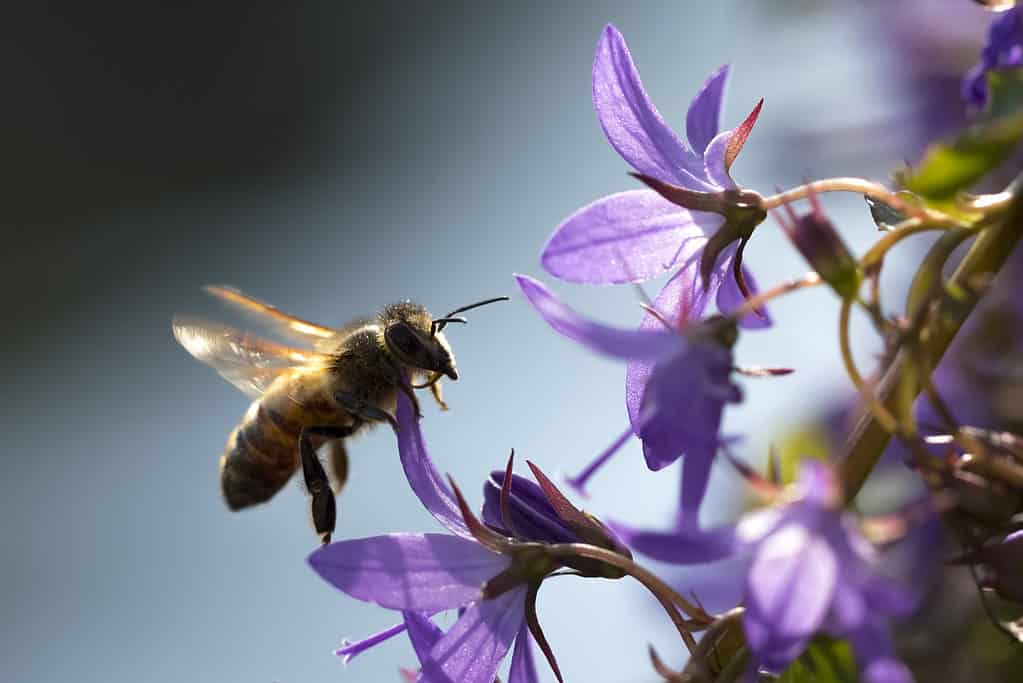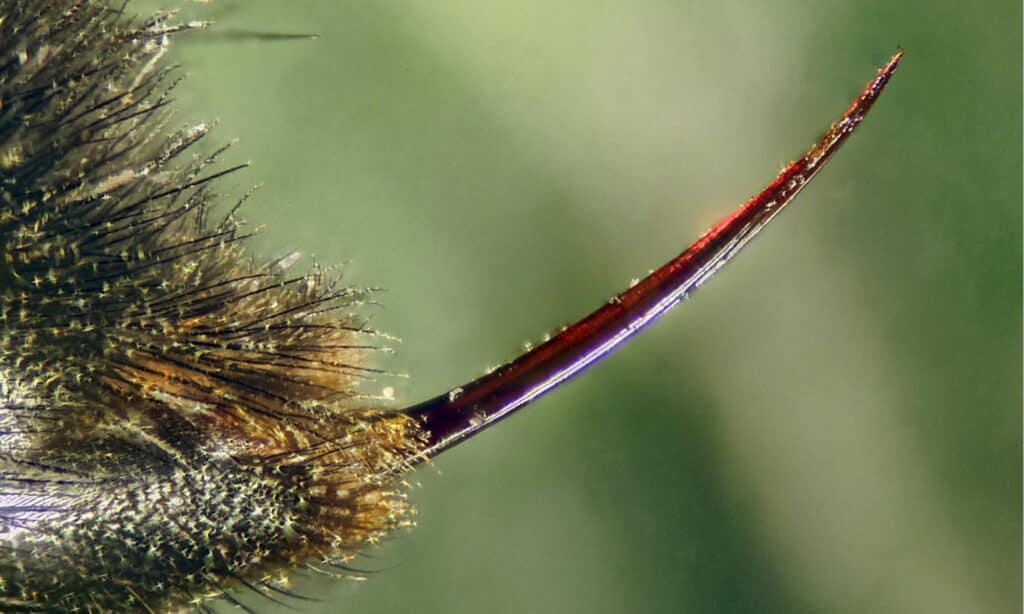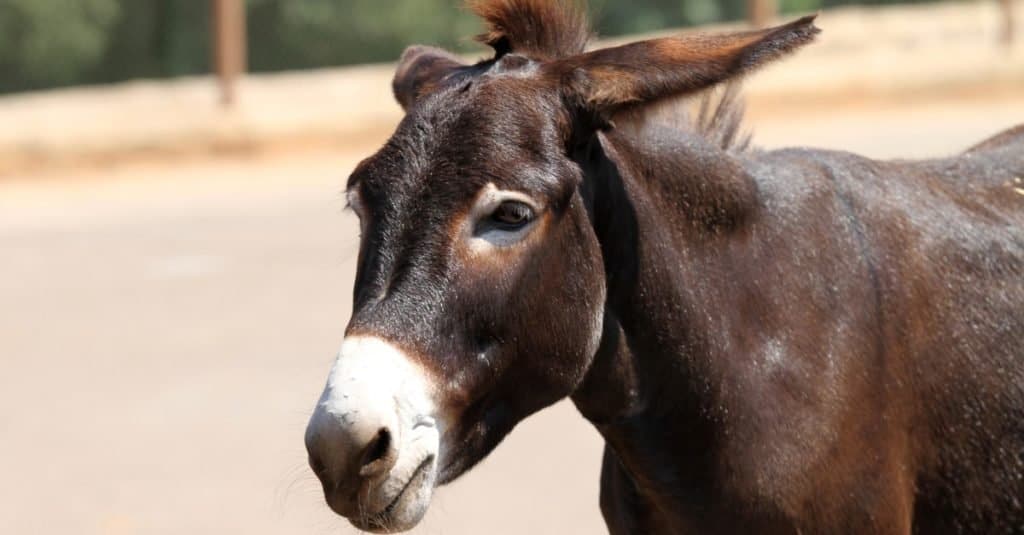State legislatures adopt various symbols that demonstrate their citizens’ values or show off some unique aspect of living in the region. For example, Missouri has a state motto that reads “Salus populi suprema lex esto.” Translated into English, that state motto means “Let the good of the people be the supreme law”. Not every official symbol of a state is so profound. Today, we’re going to look at the official Missouri state insect!
Learn what insect represents Missouri, when it was formally adopted as the state insect, and more!

What is the Missouri State Insect?
The official Missouri state insect is the western honey bee, Apis mellifera. The translation of their species name is “honey-carrying bee.” Of course, that name is not very apt. While this species is known for its honey production, they produce honey but they do not bear or carry it anywhere. Instead, they collect and bear pollen as they travel to different places.
These insects are among the most common honey bees in the United States. The species has many subspecies that live in various parts of the world. Together, they have a cosmopolitan distribution, so they are found everywhere except Antarctica. However, they are not originally from the United States. These bees were first brought to the Americas in the 17th century from Europe. They did not spread to Missouri until sometime at the beginning of the 19th century.

The western honey bee is the official insect of Missouri.
©iStock.com/manfredxy
The western honey bee is one of 450 different species of bee that live in the state of Missouri. They serve a vital function in the region by pollinating plants. Unfortunately, the population of honey bees throughout many parts of the world has started to decline, prompting fears that food production could be impacted.
When Did the Western Honey Bee Become the Official Missouri State Insect?

The state of Missouri has named several official animals over the years.
©Wasan Ritthawon/Shutterstock.com
Governor John Ashcroft signed a bill that made the western honey bee the official Missouri state insect in 1985. The honey bee is a critical part of the Missouri economy. Since the state is home to thousands of farms that rely on these bees to pollinate their crops, it made sense to honor this critter.
Aside from being potent pollinators, honey bees are also great for making honey. Missouri has been a leading producer of honey for two centuries. As a result, beekeeping is a popular practice in the state both for commercial and private interests.
What Does the Official Missouri State Insect Look Like?

The western honey bee is known for its yellow and black coloration and fuzzy abdomen.
©SanderMeertinsPhotography/Shutterstock.com
The western honey bee looks similar to many other honey bees. The workers and drones in the hive measure about 1/2 inch to 5/8 inch long. These creatures have black and yellow bands on their abdomens along with fuzzy thoraxes. They’re rather wide and robust compared with wasps and hornets.
Honey bees can carry pollen and nectar on their back legs using structures called corbicula. These allow the bees to transfer pollen and nectar back to their colonies in large quantities. Female worker bees and queens have stingers that they can use to fend off intruders.
Where Do Western Honey Bees Live in Missouri?

Beekeepers provide hives for bees so that we can harvest honey.
©kosolovskyy/Shutterstock.com
Western honey bees are found throughout the state of Missouri. They generally make nests in tree cavities when they have the chance. They prefer holes in trees for protection. However, they can also construct their nests out in the open but under some sort of outcropping that offers them a measure of protection.
Beekeepers also raise western honey bees in man-made hives called apiaries. These structures resemble large boxes, but they are far more complex inside. Some people keep the bees to help them pollinate their farms with a degree of certainty. Other people keep honey bees so that they can recover the honey they produce.
Do Honey Bees Sting?

Honey bees usually die after stinging another creature.
©Frank Reiser/Shutterstock.com
Yes, the western honey bee can sting like other members of its species. The female workers and the queen of the nest have a barbed stinger along with venom. However, the venom of a single bee is not much of a danger to a healthy adult unless they happen to have an allergy to bees.
Honey bees typically die after stinging. That’s not the case with all bee species. Sometimes, certain species of bees can pull the barbed stinger out and strike again or simply fly away. Roughly 220,000 people go to the hospital due to stings from hornets, bees, and wasps, and only 60 of those individuals die. While painful, stings from a honey bee are not very dangerous to most people.
Also, the official Missouri state insect does not go out of its way to sting. The worker bees will only sting if they feel threatened.
Does Missouri Have Other State Animals?

Mules are the official mammal in Missouri.
©BlackDorianstock/Shutterstock.com
Yes, Missouri has a host of other state animals. For example, the mule has been the official mammal of the state ever since 1995. This creature was recognized for its hard work on farms along with its contribution to both World War I and World War II. All in all, Missouri has half a dozen different state animals that represent the area.
Missouri is home to a host of different animals. Some of them are such exemplars of the industry and history that politicians recognize them as being representative of the state as a whole. The official Missouri state insect is the humble western honey bee, a helpful, widespread, and somewhat powerful insect.
The photo featured at the top of this post is © SanderMeertinsPhotography/Shutterstock.com
Thank you for reading! Have some feedback for us? Contact the AZ Animals editorial team.







